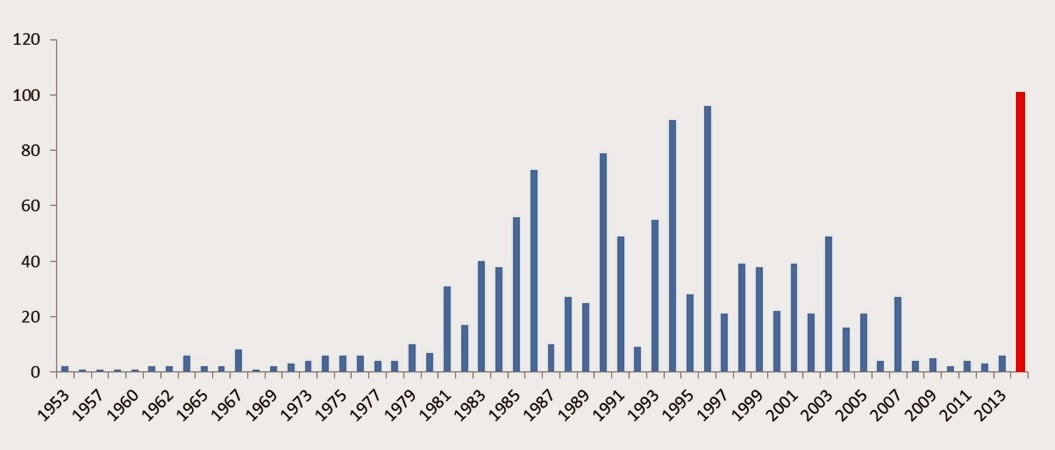We previously posted about the number of Puffins being found in France, but in he last week birds have been turning up along the west coast of Ireland and Britain. Statements such as "I found this ringed bird among 148 dead puffins on 900 meters of beach" are sadly common place.
 |
| Winter-plumaged Puffin Gunwalloe Fishing Cove, Cornwall (Mark Grantham) |
- 124 Puffin
- 104 Guillemot
- 98 Razorbill
- 75 Shag
- 7 Gannet
- 4 Black Guillemot
 |
| Number of Jan/Feb ring recoveries of Puffin |
 |
| Number of Jan/Feb ring recoveries of Razorbill |
 |
| Number of Jan/Feb ring recoveries of Guillemot |
This will be a small fraction of the total amount of birds that have died (now well over 28,000 birds) but these ringed birds do tell us something about the birds affected. Many of the Puffins are from sites including Sule Skerry (40km west of Orkney), the Shiant Islands (Outer Hebridies), the Treshnish Islands (near the Isle of Mull), Great Saltee (off Co Wexford) and Skomer Island (Pembrokeshire).
 |
| Razorbill
M91165 was ringed as a chick on Sanda Island in 1997. It was one of 40 birds found at Watergate Bay, Cornwall, on Valentine’s Day. © Newquay Beach Care |





That is terrible, such a loss of life of such wonderful birds. What happened in 1983, seems similar numbers?
ReplyDeleteThis was actually a massive seabird wreck in the North Sea in February 1983 when 34,000 birds were washed up. A summary of this incident was published in Bird Study:
ReplyDeletehttp://www.tandfonline.com/doi/pdf/10.1080/00063658409476822